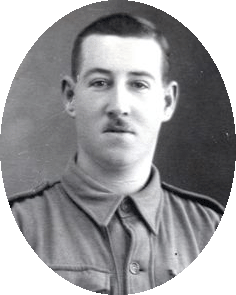George Turner
Name: Richard (George) Turner
Rank: 2nd Lieutenant
Service Number: 106 (AIF)
Units Served: 2nd Battalion AIF; Army Ordnance Corps; 37th and 47th Reserve Squadrons, Royal Flying Corps.
Personal Details: Richard George Turner, whose preferred name was George, was born on the 30th January, 1894 in Jamestown, South Australia, to parents Sydney and Louisa. He attended primary school in Jamestown before completing most of his high schooling at Gladstone, but moved back to Jamestown in 1910 to complete his schooling. After finishing school he worked as a bank clerk for the Union Bank, working in branches at Laura, Melrose, Port Pirie, Adelaide, Port Adelaide, and Port Elliot before transferring to Sydney. He was a member of the Church of England and had served in both school cadets and the militia before enlisting in the AIF.
Enlistment Details: George enlisted on the 21st August 1914 in Sydney at the age of 20 years and 6 months. He was 5’6 ½” tall, with a fresh complexion, grey eyes and fair hair. He was assigned to the 2nd Battalion.
Details about his role in War: George left Australia from Sydney on the 18th October aboard the “HMAT Suffolk”. He was part of the first landing on Anzac Day at Gallipoli and was wounded the following day with a gunshot wound to the leg. He was evacuated to Alexandria to recover but returned to Gallipoli on the 18th May and was made a stretcher bearer on the 18th July. He remained on Gallipoli until the evacuation. After returning to Alexandria he was transferred to the Australian Ordnance Corps on the 4th March 1916 and the following day transferred to the Deputy Assistant Director of Ordnance Services for clerical duties. He returned to the 2nd Battalion in time to leave Egypt on the 22nd March arriving in Marseilles on the 28th. He was then promoted to corporal on the 18th April, and was again transferred to DADOS at the 1st Divisional Headquarters on the same day. He moved between the 2nd Brigade HQ and 1st Div HQ over the next 6 months but obviously did not wish to continue with clerical duties as he transferred to the Royal Flying Corps on the 8th November 1916. He marched in to Bracenose College in Oxford for flight training on the 26th January 1917 and received his commission on the 16th March. He continued his training at Scampton near Lincoln. He completed 22 hrs and 40 mins of solo flying time, mostly in an aircraft known as a “Shorthorn” before crashing on the 4th May. George was killed in this accident, and a board of inquiry found it to be due to “a lack of judgment on the pilot’s behalf in causing the machine to get into a spinning nose dive on a turn”. He would normally have been buried at Scampton, but during his training in England he had befriended some elderly cousins of his father who lived in Farnham. These ladies lobbied the Royal Flying Corps, the railways, the police and the church to have his body released from the Flying Corps so that he could be buried in Bentley with his ancestors.
Age at Death: 23
Cemetery or Memorial Details: BENTLEY (ST. MARY) CHURCHYARD, Hampshire
